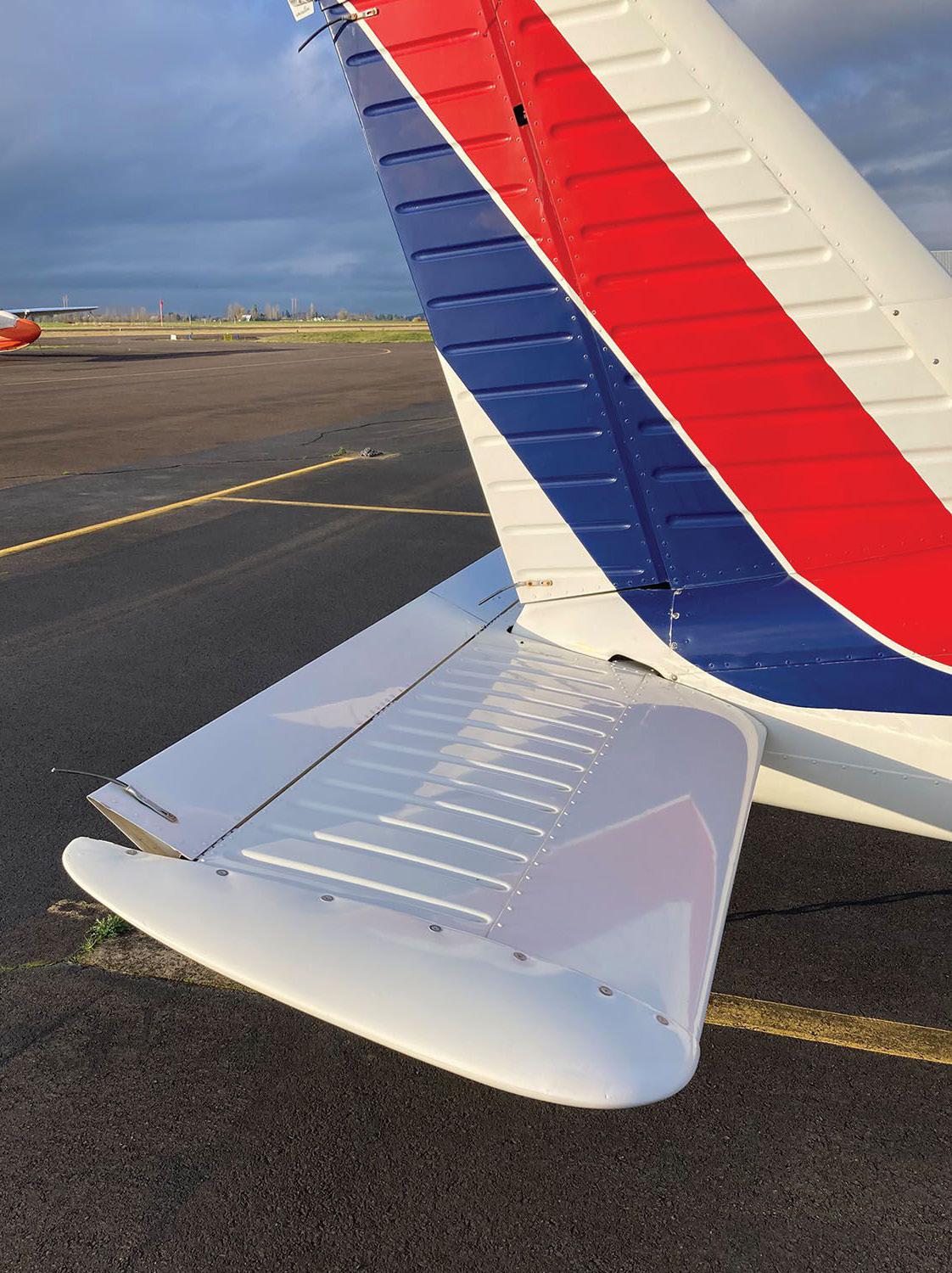EL TAIL WAGS DOG

HINGE MOMENTS INCREASE with the chord length of the control surface, with the square of speed and with the cube of the linear dimensions of the aeroplane. Thus, if you double the speed the hinge moments grow four times greater; if you double the size of an aeroplane, keeping all of its proportions unchanged, they become eight times greater. If you double both size and speed, hinge moments increase by a factor of 32.
From Kitty Hawk onward, aeroplanes got bigger and faster, but pilots didn’t get any stronger. Obviously, this couldn’t go on forever. There is, furthermore, only so much you can accomplish with leverage between cockpit and control surface. In principle a wheeltype control could have a large mechanical advantage, if you didn’t mind having to turn it ten or twenty times to roll into a bank; but that would not make for a very agile aeroplane. A stick was at an even worse handicap, its movement limited by the space between the pilot’s knees.
Now, it was well known from the world of boats that hinge moments could be reduced by putting a portion of a surface, such as a boat’s a rudder, ahead of the axis of rotation, or ‘hinge line’. Some early aeroplanes had completely balanced rudders and no fixed fin at all. Many also had balancing area projecting ahead of the ailerons at the wingtips. These expedients worked for small aeroplanes, but for large ones, like the multi-engine bombers that came into being during the First World War, keeping control forces within comfortable limits with aerodynamic balance was very difficult.
During that war, however, a German engineer named Anton Flettner had an ingeniously simple idea for applying leverage in a new way.
Denne historien er fra November 2023-utgaven av SA Flyer Magazine.
Start din 7-dagers gratis prøveperiode på Magzter GOLD for å få tilgang til tusenvis av utvalgte premiumhistorier og 9500+ magasiner og aviser.
Allerede abonnent ? Logg på
Denne historien er fra November 2023-utgaven av SA Flyer Magazine.
Start din 7-dagers gratis prøveperiode på Magzter GOLD for å få tilgang til tusenvis av utvalgte premiumhistorier og 9500+ magasiner og aviser.
Allerede abonnent? Logg på

PIPISTREL'S ELECTRO VELIS
THE FUTURE IS HERE!

LIVING THE DREAM-HEADING OFFSHORE
I dearly miss the mountains of the Western Cape, but I'm soon reminded that my \"office\" offers one of the best views, regardless of where I happen to be located on this planet. Today is no different, as ocean, clouds, and sunrise all conspire to produce a breathtaking vista while we settle down in the rhythmic gallop of the big Sikorsky.

CANADIAN C152 spin
Jim’s Note: The SACAA seem to have lost all but the newest and oldest accident reports. This is not a bad thing because I have found Canadian reports are excellent and have selected this one, because it deals with issues very relevant to South Africa – particularly density altitude, spinning, and post maintenance test flight

SPECIAL RULES AREA CHARTS
Imagine a chart that doesn’t rely on batteries that unexpectedly let you down. Imagine one that covers a large area in detail, yet that weighs a few grams.

FLIES ON THE CEILING
Allow me for a moment to explore one of the great mysteries of aviation with a subject that has been around ever since Immelman rolled his Fokker rightway up at the top of a loop over the shell-holed killing fields of World War 1.

INTERESTING AVIATORS I HAVE MET
I remember back in 1960 being in Nairobi West (where Wilson Airport is situated) standing with my mother watching a train pass by, filled with refugees from the Belgian Congo. The train was full, with many of the people dressed in pyjamas, or whatever they could find to wear in their haste to leave.

EVACUATOR
I have had a lot of fun during this past few years of flying. I have sneaked a Twin Otter out of Algeria, over Libya, to Tripoli and thence, across the Mediterranean, to the historic twinkling jewel box of Malta, at night.

WHY AIR POWER IS KEY in the Ukraine War
There is evidence that with 'borrowed' F-16s and the recent arrival of French Mirage 2000s, improved Ukrainian air superiority may be the deciding factor that brings the Russians to the peace talks table.

JANUARY 2025
The new year is off to a good start with 15 aircraft having been registered.

FLYING AROUND THE KZN AIRFIELDS
In less time than it takes to drive from one side of Johannesburg to the other, you can fly to beautiful KZN to experience amazing scenery and some fantastic airfields and hospitality.
